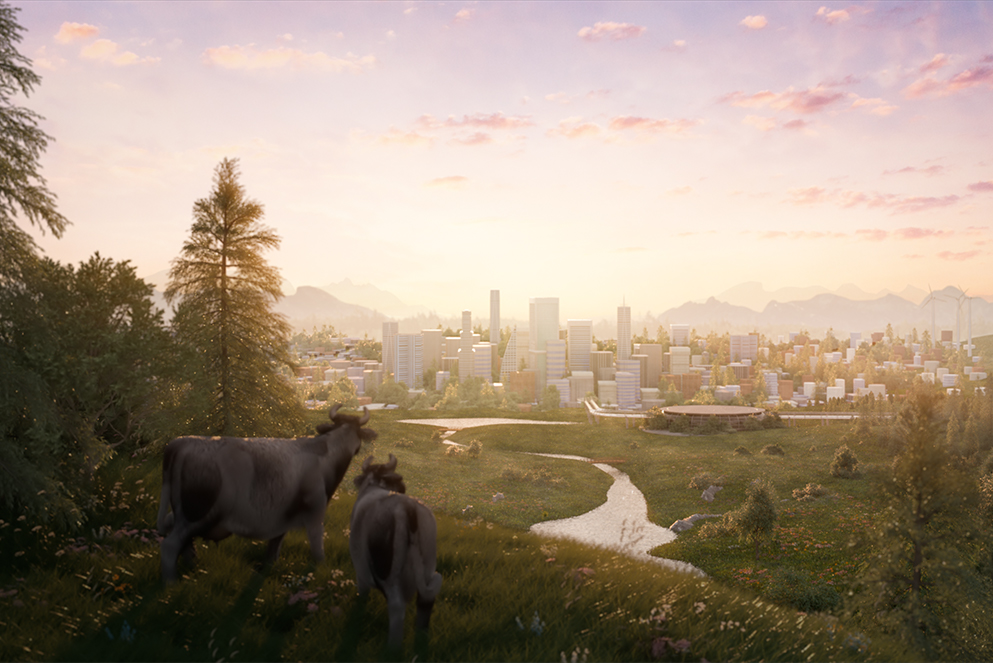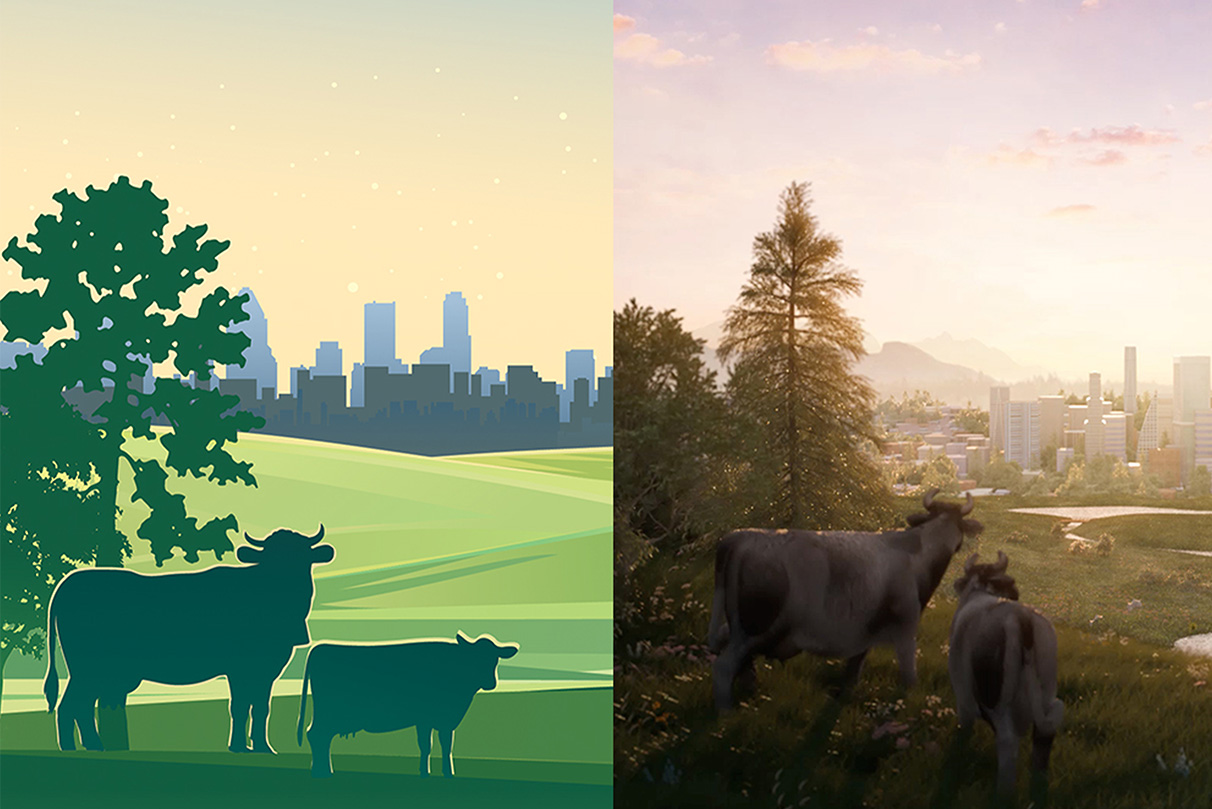PROJECT CMF
Project CMF
Scroll
to read
Contents:
Introduction
Development & Release
Production Process at CMF
Unveiling at Google
Final Designs
Introduction
Designing the Future of Cultivated Meat
At From Fauna we strive to take the intricate nature of cultivated meat and make it feel approachable and within reach. This, and our belief that design & video production are critical tools to educate potential future consumers, led us to starting Project CMF.

Project CMF, short for Cell-based Meat Facility, gives a glimpse into a future where meat is made by farming animal cells instead of animals. It represents the first vision for meat production at scale through the process of cultivated meat. The realistic nature of CMF exists from both a visual standpoint, but more importantly, a technical one. Its design was rigorously constructed with input from the top experts in cultivated meat. As it was backed by dozens of pages of calculations from our partner scientists at From Fauna, Project CMF is a true representation of cultivated meat's cutting edge.
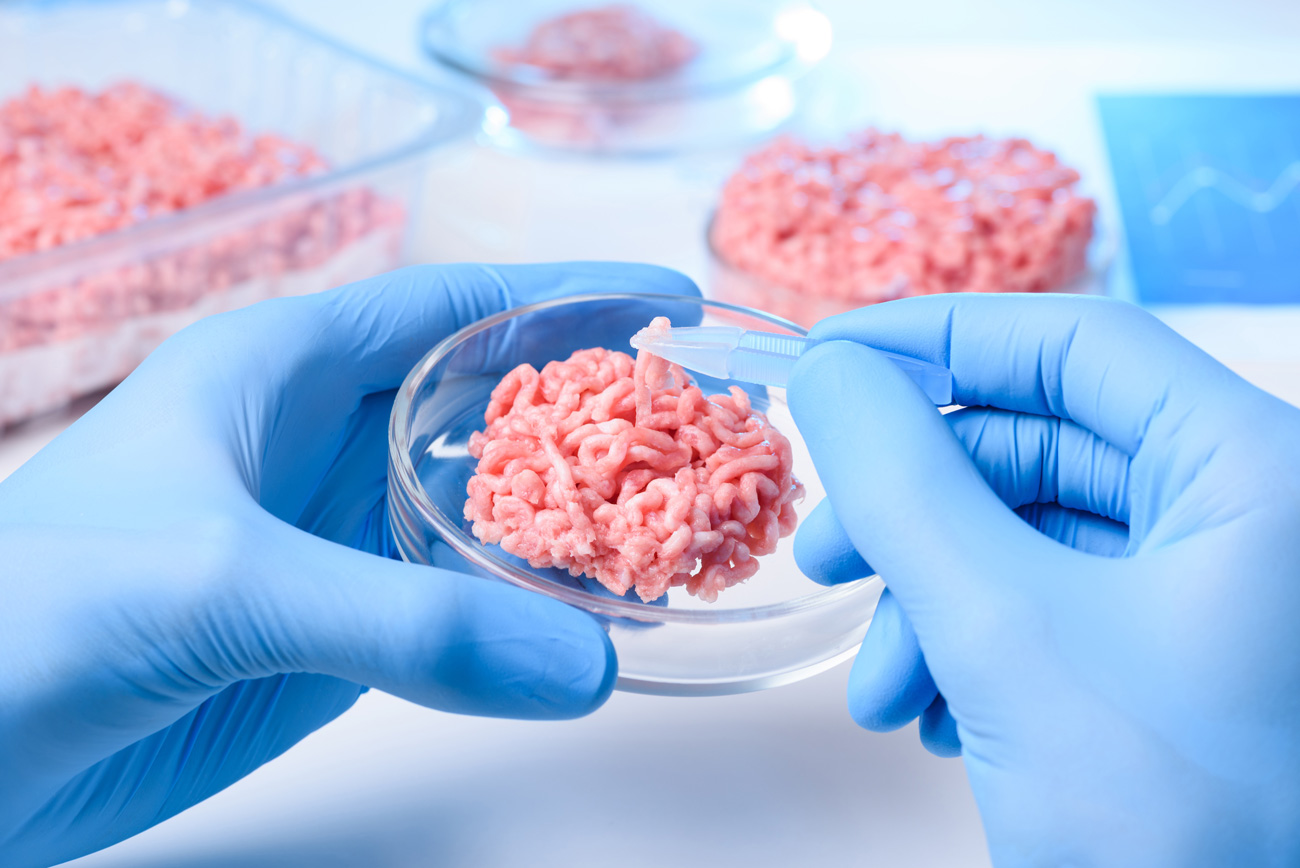
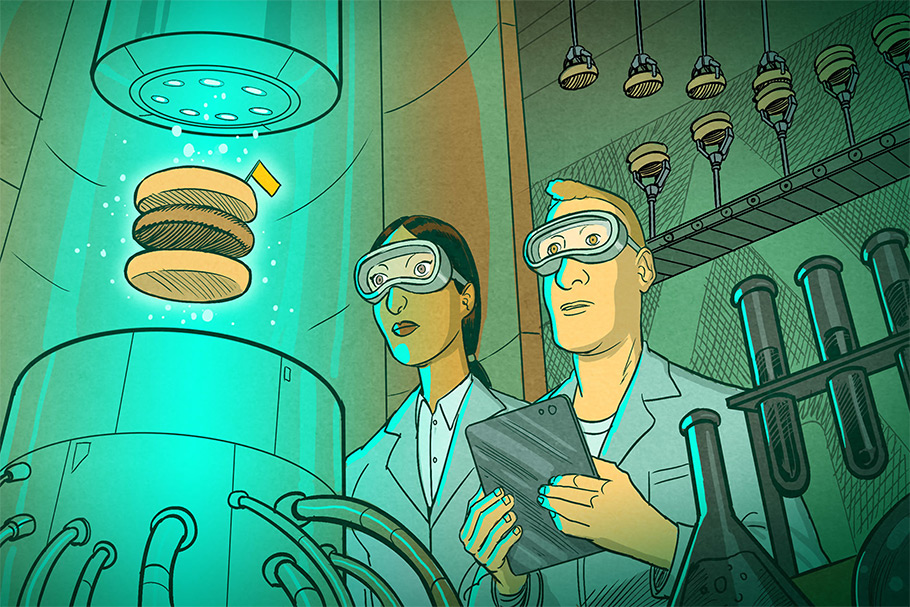
For years we had seen the type of imagery that was being used to represent our field: cold, clinical, and most importantly, inaccurate. We created CMF to accurately reflect where our field is heading and to share representational visuals that tell that story without any language to cater to our international audience. By creating an ambitious, yet reasonable depiction of a cell-based meat production facility in the year 2040, the designs on this webpage give the public an accurate vision for what a “lab-grown” meat facility will actually look in the future like should cultivated meat be well received by the masses.
Development & Release
The Story Behind Project CMF
While they are often hidden out from cities and towns, slaughterhouses play a major role in global society. Their existence is a critical piece to the puzzle for food producers supplying meat to the world. Project CMF’s major challenge was to innovate an evolution to such a building, transitioning the processes within its walls from that of animal agriculture to cultivated meat; this would prove to be a tall task.
We were additionally faced with the challenge of ensuring public perception of cultivated meat improved, providing a more accurate alternative to the petri dish and sci-fi imagery shown above. So, alongside leading scientific experts in cultivated meat, we designed the world’s first realistic depiction of a Cell-based Meat Facility which now offers a suitable visual alternative to the sensational imagery that’s otherwise used to represent Cultivated Meat.
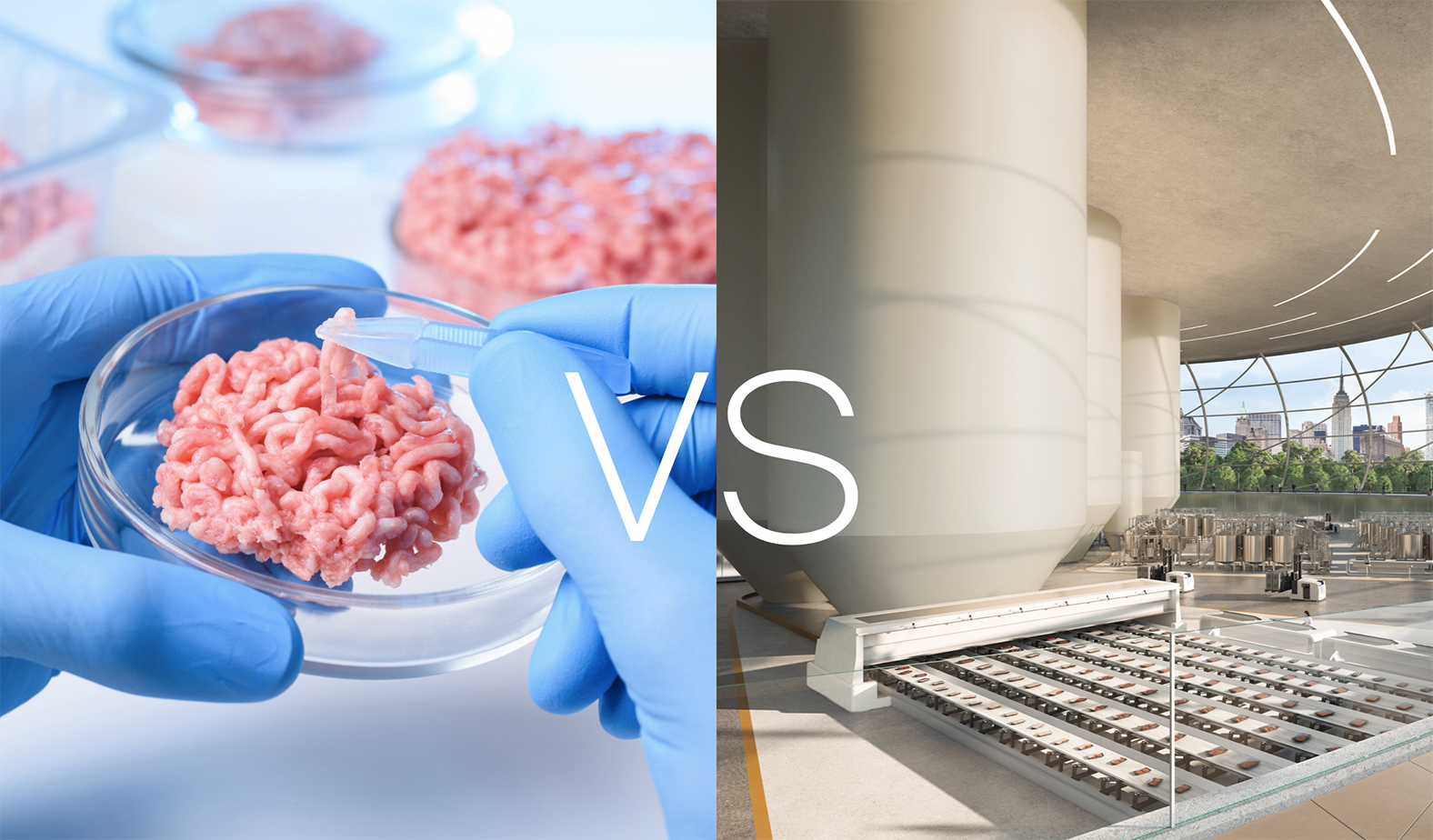
The story behind Project CMF starts in the early 2010’s. Our Founder, Kris Spiros, had been developing a vision for many years on what a cultivated meat-driven meat production facility would look like. He felt the design had to strike a crucial balance between the old and the new. It couldn’t feel too futuristic, and hence, out of reach, but also had to confidently stand within its innovativeness. After all, a revolutionary architecture effort like CMF was indeed the first of its kind.
The design needed to live up to the iconic status it could warrant within human civilization in just a couple of decades; similar to what people come to expect when thinking of other common iconic structures: a grocery store, fire station, post-office, or basketball court. They all convey a relatively consistent vision when you consider their architectural structures, inside and out.
But any serious work on what would ultimately be termed Project CMF was delayed for a number of years. From Fauna didn’t possess the proper funding that was necessary to do such a project justice, nor was visualization technology where it needed to be or the right collaborator who understood the breadth of the creative mission. Fast forward to 2018 and we were underway creating the first textbook on cell-based meat. We quickly realized that visuals, which we felt were going to be so critical to the book's success, were a missing component to the textbook.
This neglected area of our textbook, coupled with that previous vision for the architectural concept and the connections we now had with scientific leaders in the field of cultivated meat who could provide the right counsel, led us to the beginning of Project CMF.
Towards the end of 2018, we decided we were going to take this endeavor seriously and sought to find a collaborating visual designer who would come onboard for the massive innovation effort that CMF required. Project CMF not only had to reimagine what meat production via cultivated meat would look like, but because the design is set in the year 2040, we needed to integrate other futuristic artistic elements related to technologies that are likely to play a larger role in society at that time. In the early phases of the project, we spent time determining how to mesh the 20-years of projected innovation of cultivated meat with other advanced technology companies including Hyperloop, Boston Dynamics, and Tesla.
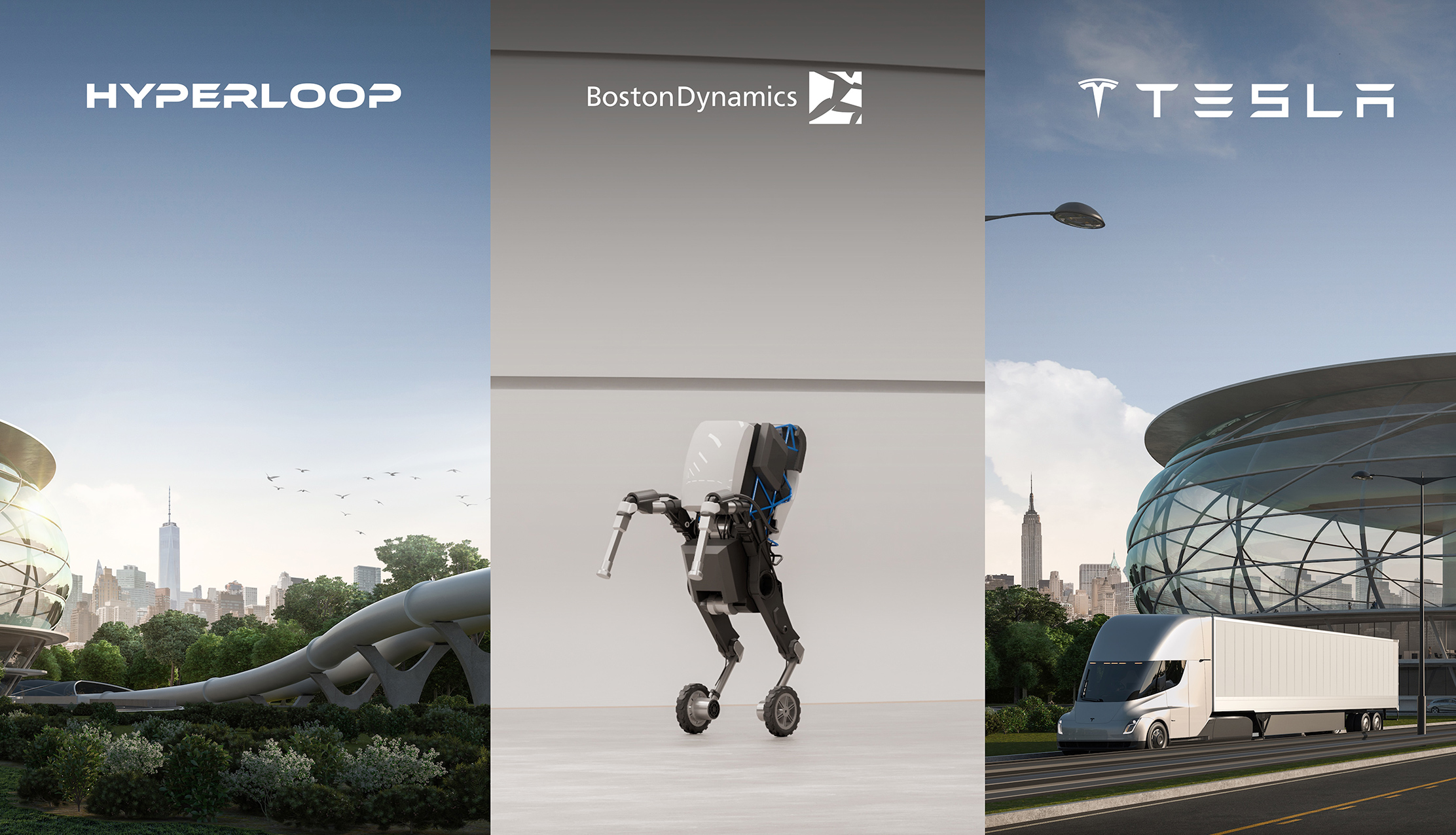
With the future mindset CMF called for, it was tough finding someone up for the challenge; most visual designers we pitched the project to were more comfortable with the traditional living room or kitchen renders. But we eventually met Mihai Iacubovschi, a 3D artist who was interested in working on Project CMF. The next step was working with our From Fauna Industry Partners to gather their views on the future of Cultivated Meat, discussing existing research that would inform an accurate design, and ultimately incorporating the diverse feedback we received from these experts to create a vision that reflected our entire field, democratically.
Over the course of a year, the majority of time spent on Project CMF was strategic planning. This was due to the fact that scaling up cultivated meat, or essentially the science of maximizing production capacity/efficiency to the point of a real-life version of CMF becoming possible one day, is a top R&D focus for virtually every Cultivated Meat startup in the world. And so, unified agreement was difficult to come by amongst our partners.
It may appear simple that the design had to illustrate a structure, but to keep the design realistic, this structure had to be heavily influenced by its internal function. That function is what’s happening inside the walls of CMF that allow cultivated meat processes to run their course, transforming cells into meat. This challenge was similar to the field of anatomy and physiology and many others, where the concepts of form and function heavily influence each other.
Over many iterations, we incorporated the dozens of pages of data and calculations we received from our industry partners. CMF’s design started to successfully merge the original conceptual vision of our Founder with the influx of diverse opinions and viewpoints from the top scientific experts in our field.
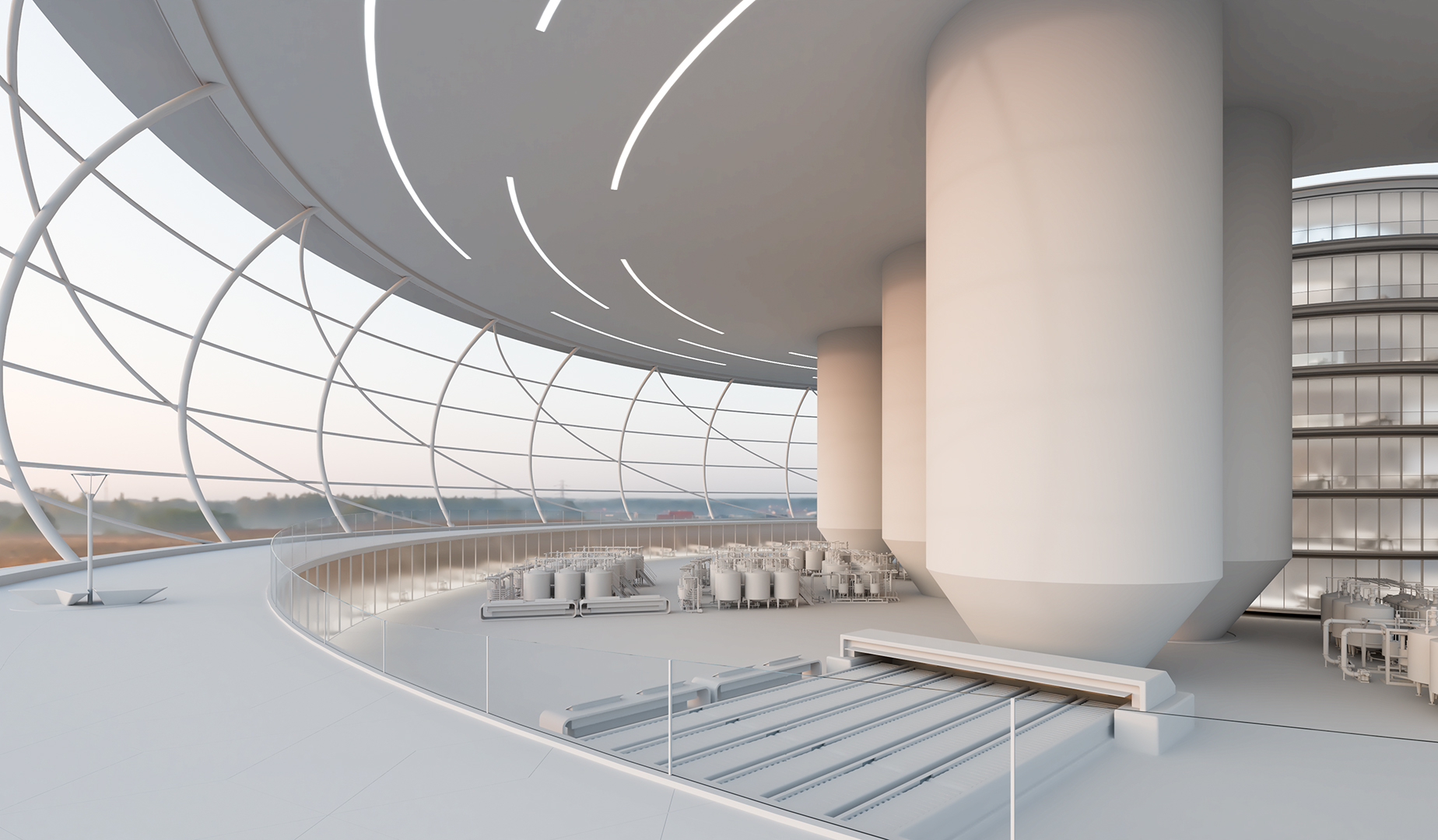
For an extensive look at Project CMF’s behind-the-scenes click here
Meanwhile, we had received an invitation to partake in a Talk at Google, having the honor of being the first to speak with Googlers on the topic of cultivated meat. The "Introduction to lab-grown meat" presentation is one that we have been asked to deliver quite often over the last decade, so with our work on CMF at this time concluding in tandem, we thought this event could be a great chance to unveil the initial phases at Google through a pre-unveil of our first designs. Google was excited to feature a Project CMF reveal at our Talk@Google and the rest is history!
The part of this project that we feel the most proud to have implemented was Project CMF’s representation of the state of our field and what the cutting edge is building up to soon; it illustrates a vision for openness, transparency, and innovation for the future of meat. We were honored to have led an effort where companies, who are usually staunch competitors, collaborated on the project to benefit public awareness on cultivated meat. We’re grateful to the many cell-based meat companies around the world who came together to design this "slaughterhouse of the future" and without their input, Project CMF would not have been possible.
CMF is featured prominently in From Fauna materials, including our website, social media, and the From Fauna Store.
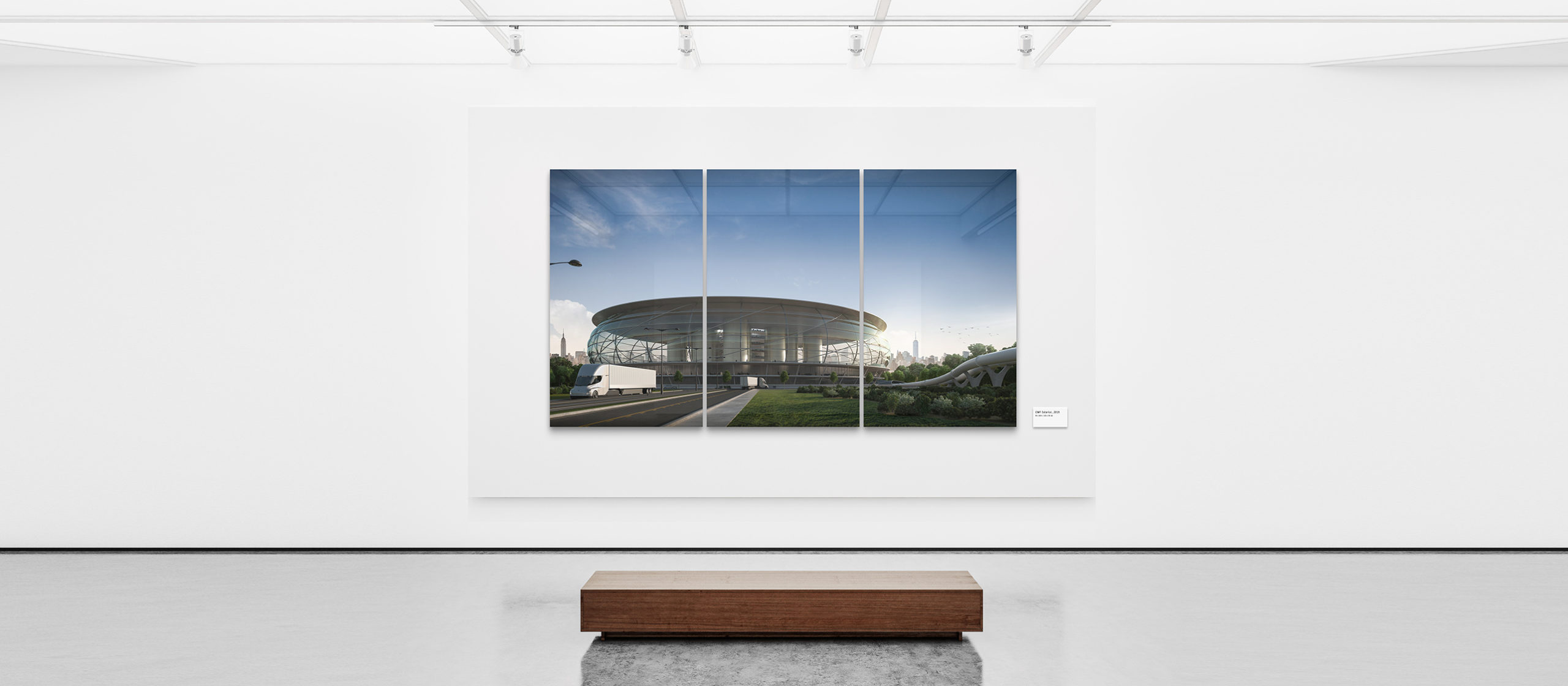
Project CMF, a Featured Design from the From Fauna Store
Project CMF continues on, currently evolving through new software as an ongoing effort by From Fauna. CMF’s first phases were originally led by a small, yet geographically-expansive group of creatives, spanning 4 continents: Kris Spiros (North America), Mihai Iacubovschi (Europe), Nisaul Muthoharoh (Asia), and Henry Mbwille (Africa).
-
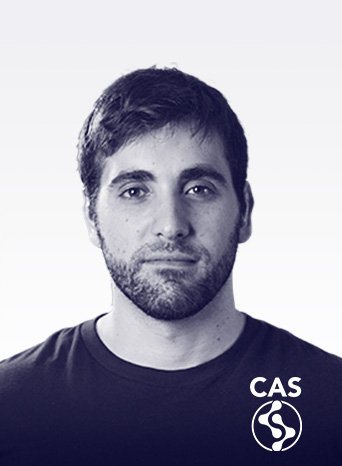
Concept Design & Project Management
Kris Spiros
Kris is the Founder, Creative Director, and President at From Fauna. He is the visionary behind a multitude of pioneering projects in the cultivated meat space, including the Harvard & Stanford-profiled 90 Reasons and Project CMF.
His efforts have helped to establish the field of cultivated meat over the last decade, having been featured and quoted in the Financial Times, Washington Post, Science, Harvard Innovation Lab, MIT Tech Review, Meat Science, Forbes, and has developed collaborations between From Fauna and the UN, Harvard, Stanford, Elsevier, and Google. -

Visual Design
Mihai Iacubovschi
Mihai is the Founder & CEO at Carvv Studio, based in Bucharest, Romania. Over the last decade, his professional experience within the creative realm includes 3D visual design, creative strategy, and product development. More recently, he has worked within real estate and the abstract concept creation space. Carvv’s international clientele benefit from Mihai’s polyglot background as he is fluent in 5 languages.
-

Logo Motion Design
Henry Mbwille
Henry is the Creative Director at Young Creative Leaders, based in Dar es Salaam, Tanzania. He’s previously worked as a Senior Art Director at Dentsu and Aggrey & Clifford, specializing in advertising and graphic design. Henry is also a From Fauna Fellow, having joined From Fauna through the UN volunteer partnership, focusing on motion design and artistic strategy for Project CMF.
In 2021, a virtual event entitled “Project CMF: an Artistic Analysis” was hosted by Global UXD, an international design think tank. The full recording of the talk can be found here.
Production Process at CMF
From Cell to Burger
The following process describing how cultivated meat can transform cells into meat is best illustrated through the visual aid of Project CMF. The meat production stages are detailed in subsequent paragraphs below; names of the CMF renders are referenced in quotes such as “Main Interior” to gear your attention to the relevant CMF design to which a particular stage of the process is related.
STEP 1 - Raw materials for the cells, in the form of powdered media, are prepared off-site and delivered to the facility via a hyperloop transportation system. To become a media solution that can be consumed by cells, this powdered media is mixed with treated (sterile) water on the “Media Production” floor and then pumped up to the “Main Interior” into the Cell Cultivators (warm tanks where cells and the media solution are contained). This process differs slightly for each cell/meat type since different species’ cells require different media solutions.
STEP 2 - Simultaneously, an immortalized cell-line (a non-exhaustive collection of cells that can always be selected from, doubling indefinitely) progresses through a seed train (the process of cells growing exponentially in incrementally larger cell cultivators) on the “Main Interior”, eventually making its way to the largest capacity, ~3 million liter cell cultivators. The cells are mixed with the media solution described in Step #1, as well as with feeder-culture products, throughout their duration in the seed train.
STEP 3 - As they continuously consume nutrients from the media solution, the cells in the cell cultivators from the “Main Interior” eventually duplicate in quantity to a threshold high enough to move on to the Meat Cultivators (where blank cells that are not yet specified become differentiated). To proceed, they exit through the bottom of the cell cultivators from the “Main Interior” to the Meat Cultivators on the “Food Processing” floor. This floor, unlike the one above, is physically, but not visually, closed off to visitors as it is a highly-specialized area free of contaminants, which constantly monitors for pathogens to ensure maximum food safety.
STEP 4 - Once in the meat cultivators on the “Food Processing” floor, the cells, still in a solution with the media and now waste products as well, are filtered through a structure that scaffolds them, allowing the cells to take shape towards their final meat structure. While this is taking place, the used-media solution (waste products) return back to the “Media Production” area to be recycled, and the waste discarded.
STEP 5 - Once they go through the scaffolding system of the meat cultivators, the cells have successfully gone from a blank cell to a more specified meat cell type and are ready to become their final respective meat product. They then leave the meat cultivators, and food processing commences, taking certain types of meat cells like ground beef and forming it into particular types, like hamburgers or meatballs; this all takes place on the “Food Processing” floor, culminating with packaging, before going back up the conveyor belt to the “Main Interior”.
STEP 6 - Lastly, the packaged meat products travel on the conveyor belt, going from the “Main Interior” to the “Media Production” floor, now prepared for final delivery where autonomous Tesla trucks and Hyperloops await.
July 2019
Unveiling at Google
Project CMF was originally unveiled to the public at our Talk at Google. The original CMF renders provided the first glimpse into the future of cultivated meat, where meat could be made by farming animal cells instead of animals.
DISCOVER
PROJECT CMF
To learn more about our collaboration with Google, please visit our dedicated collaboration page here.
Final Designs
The Future of Meat Production
The following designs exhibit the idea of a slaughterhouse, conceptually reimagined using cultivated meat. This visualization of a "Slaughterhouse 2.0" was a collaboration between dozens of our From Fauna Industry Partners who helped us create a realistic depiction for a meat production facility, projected to exist within the next 20 years. We are proud to present to you, Project CMF, set in New York City, 2040...
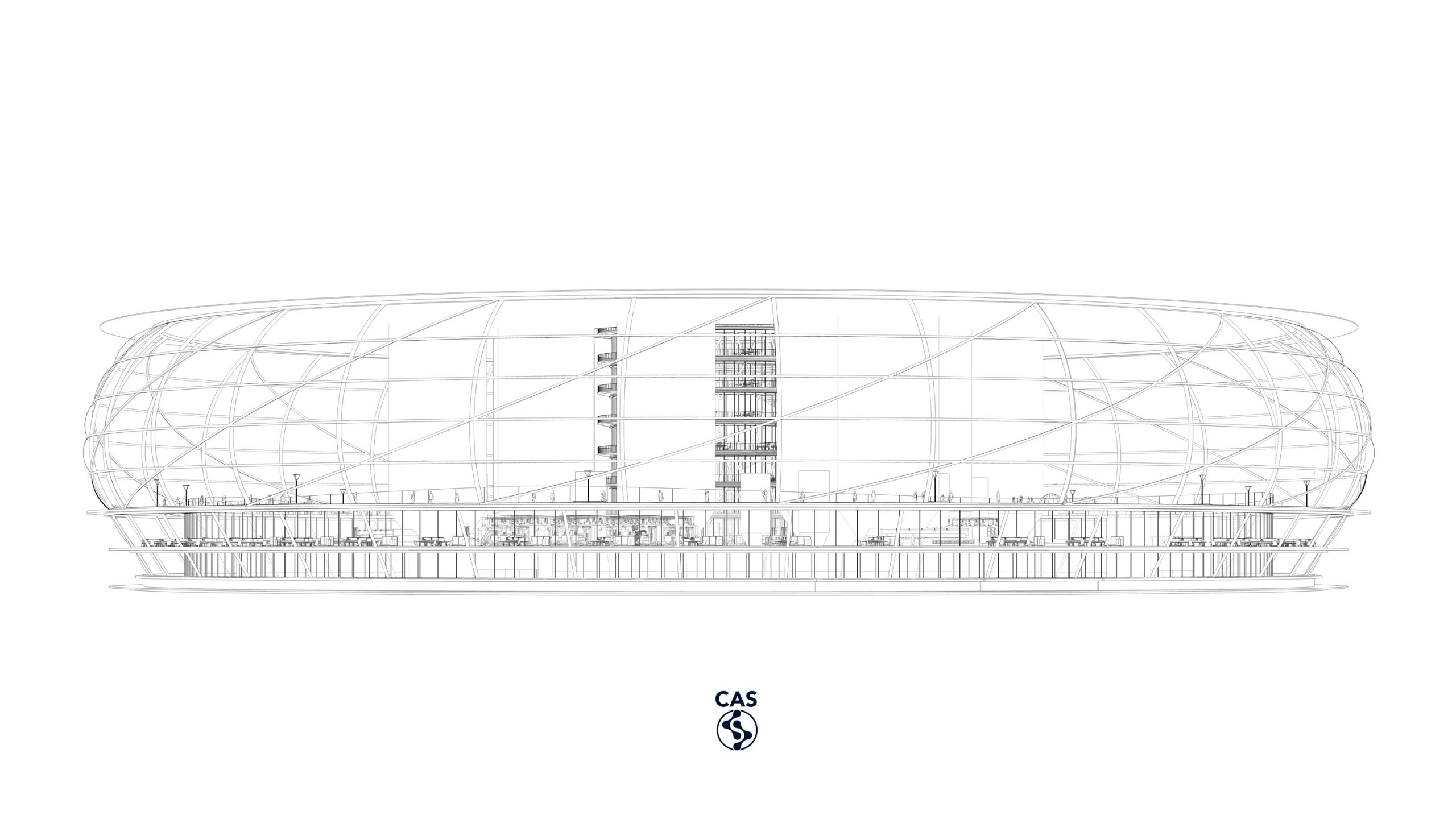
Project CMF - Sketch
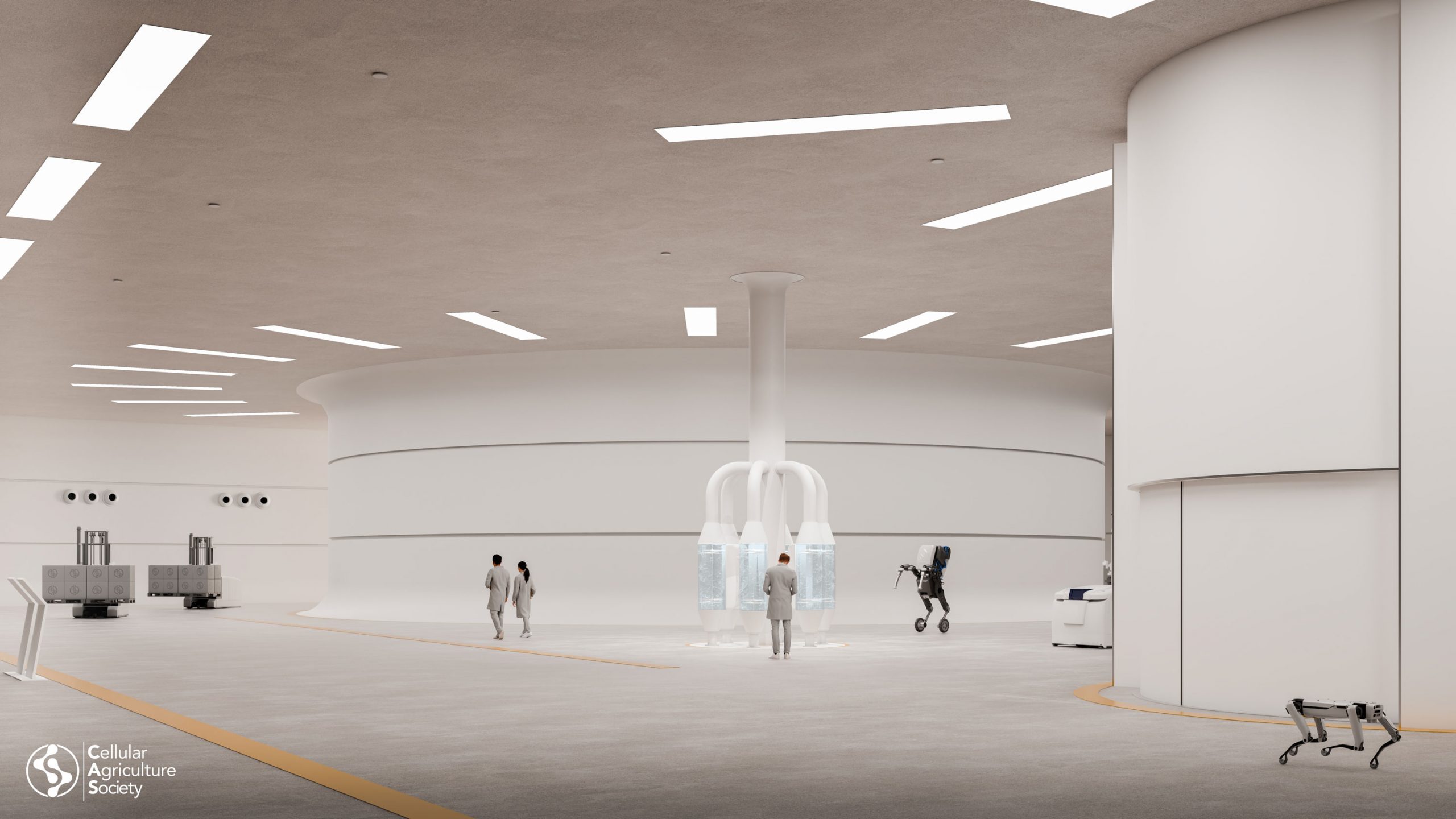
Project CMF - Media Production
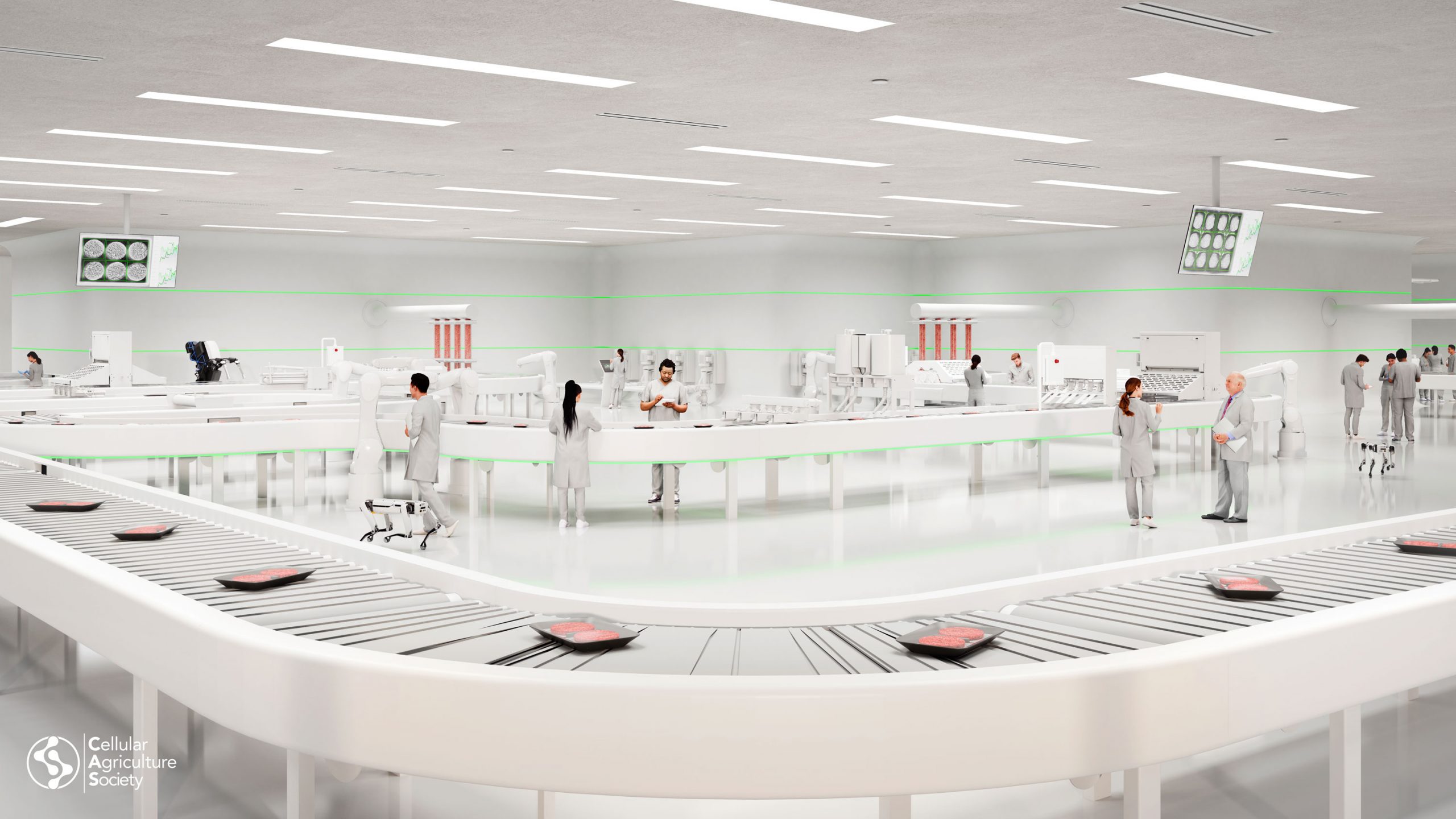
Project CMF - Food Processing
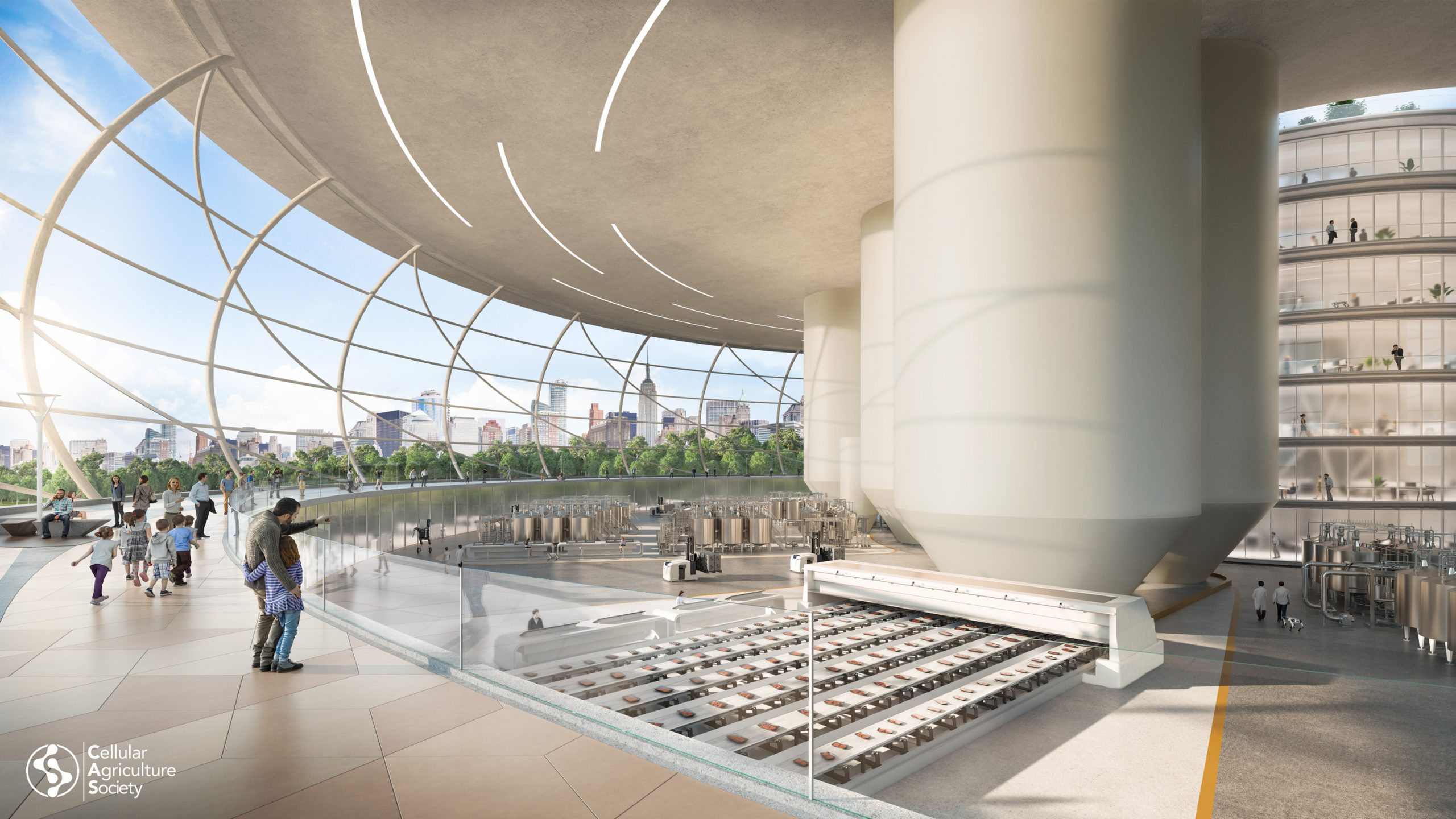
Project CMF - Main Interior
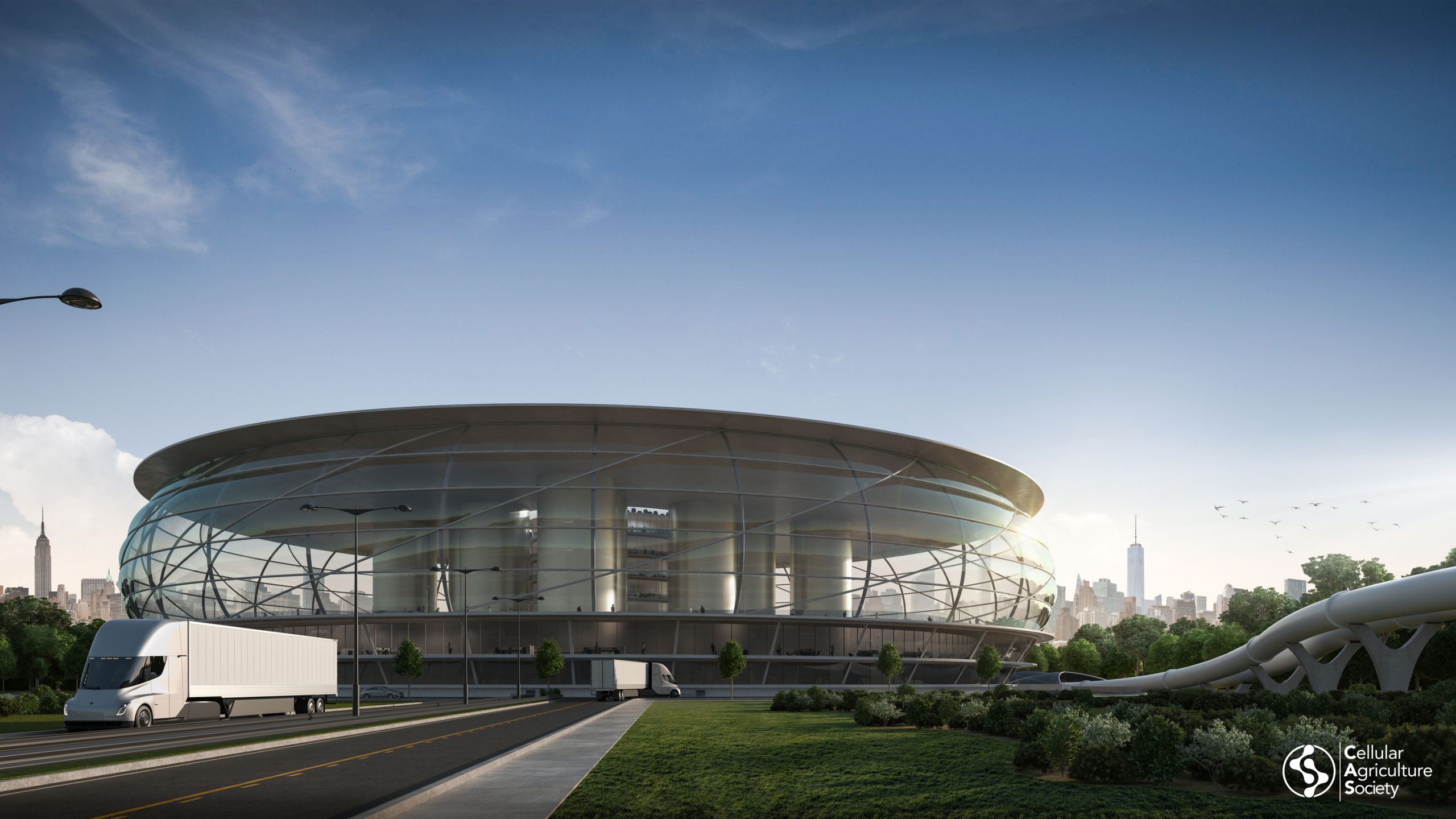
Project CMF - Main Exterior
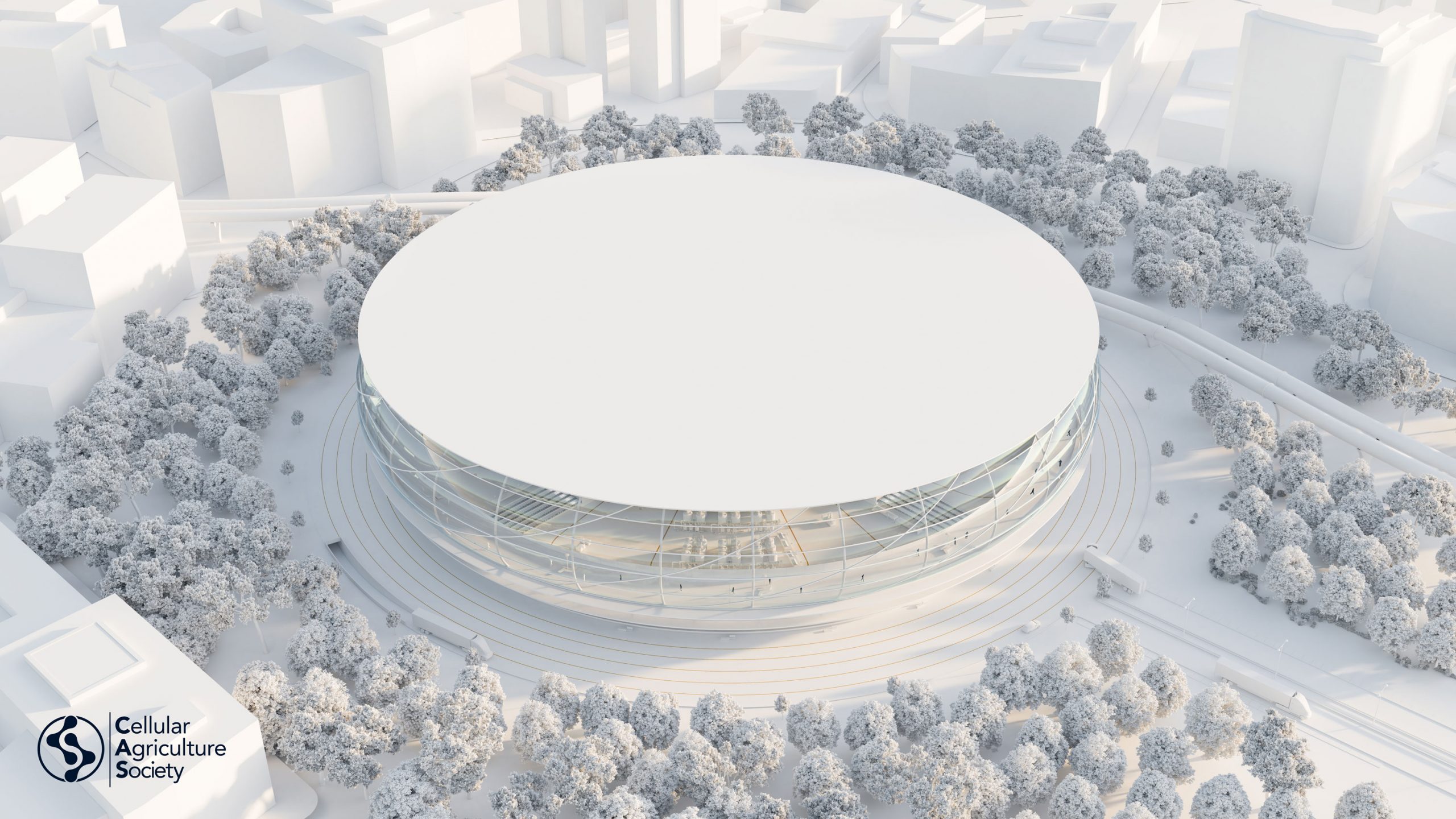
Project CMF - Clay Model
Please let us know if you would like to use Project CMF within a project of yours; we are keen to keep track of its utility to our growing global community. Feel free to email us a brief message at info@cellag.org on how you plan to use it, and please respect our copyright on Project CMF by properly attributing From Fauna. Thank you.
Related projects

